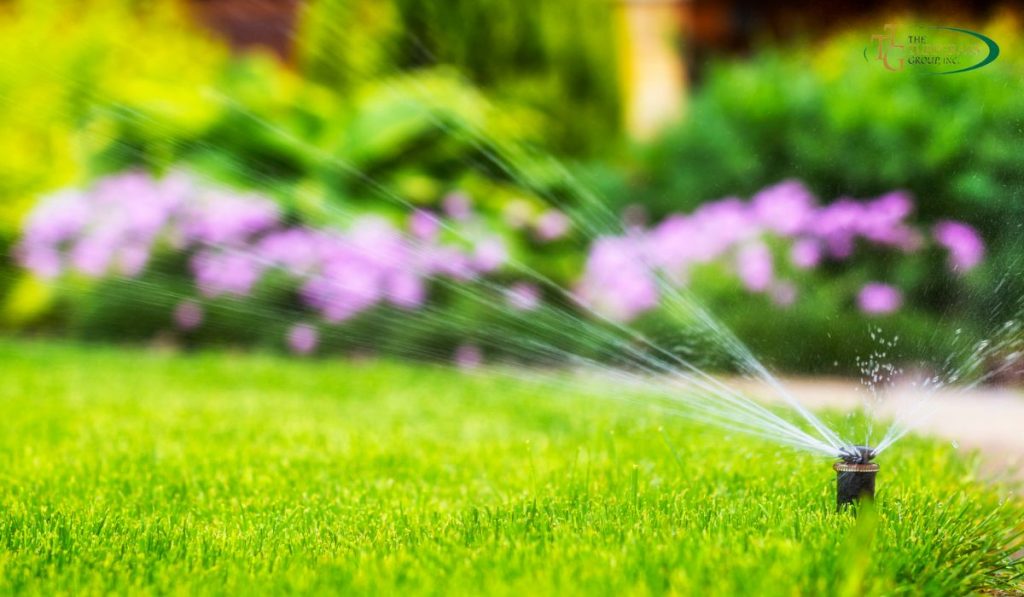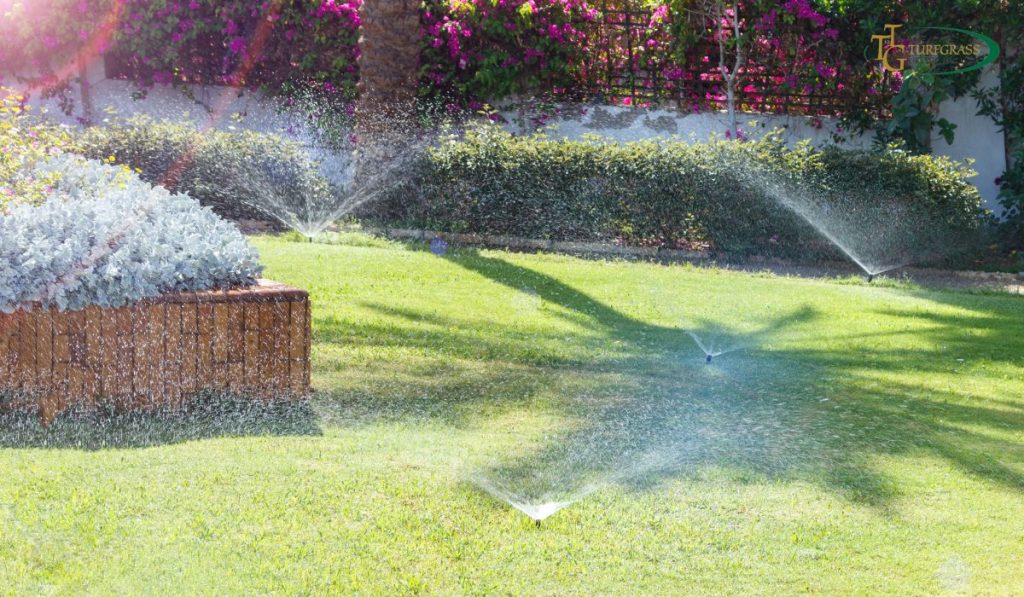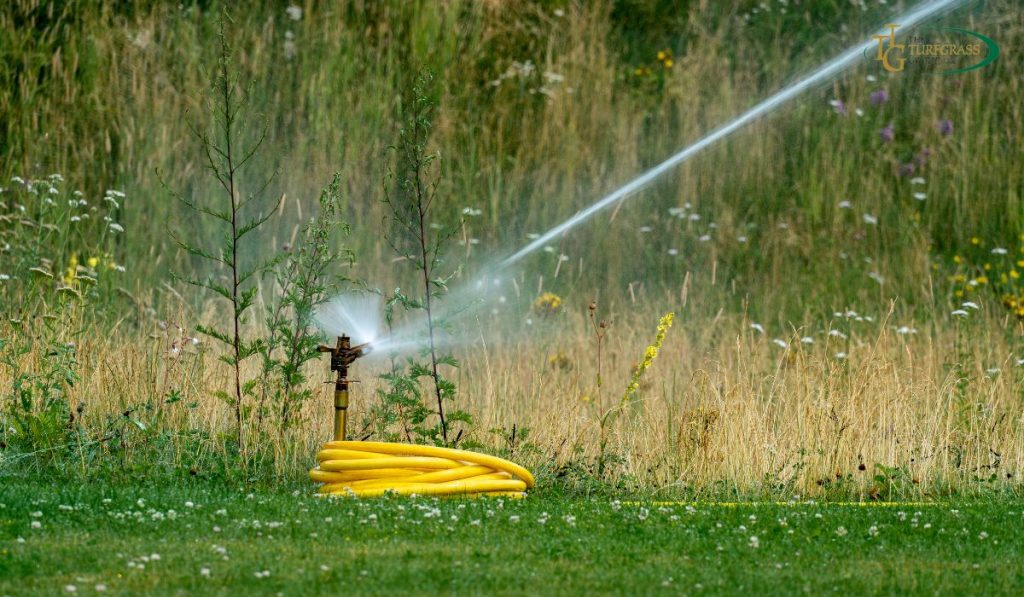
The summer brings warmth and sunshine but poses challenges for maintaining a lush and healthy lawn. Proper watering is crucial during this time to ensure your property stays green and vibrant. This topic will discuss some essential tips for watering your summer lawn effectively. We’ve covered everything, from establishing a watering schedule to implementing water-conservation techniques. So let’s dive in!
Understanding the Water Needs of Your Lawn
Different types of grass have varying water needs. Identifying the specific grass species in your lawn and understanding its water requirements is crucial. Warm-season grasses like Bermuda grass and Zoysia grass have different watering needs than cool-season grasses like Kentucky bluegrass and tall fescue. Take time to research and learn about the watering requirements of your particular grass species.
Establishing a Watering Schedule
Creating a watering schedule ensures your lawn receives consistent moisture without being overwatered. It’s best to water deeply and infrequently rather than shallowly and frequently. This encourages the roots to grow deeper, making your lawn more resilient to drought conditions. Consider factors like soil type, weather conditions, and grass species when determining the frequency and duration of watering sessions.
Best Time of the Day to Water
Watering your lawn in the early morning is generally the best time as it allows the grass to absorb moisture before the day’s heat evaporates. Watering in the early morning also helps prevent the development of fungal diseases by allowing the grass blades to dry before nightfall. Avoid watering during the hottest part of the day as the water can quickly evaporate, and drowning in the evening can lead to prolonged moisture on the grass, increasing the risk of diseases.
Watering Techniques for Maximum Absorption
To ensure maximum absorption and minimize water waste, use the following watering techniques:
Soaker Hoses or Drip Irrigation: These methods deliver water directly to the root-zone, minimizing evaporation and reducing weed growth.

Watering Deeply: Apply enough water to penetrate the top 6 to 8 inches of soil, encouraging profound root growth.
Watering Evenly: Ensure water is evenly distributed across the entire lawn to avoid patchy areas.
Avoid Runoff: Water in short intervals, allowing the water to be absorbed before applying more.
Avoid Overwatering
Overwatering can be as damaging to your lawn as underwatering. It can lead to shallow root growth, weed infestation, and increased vulnerability to pests and diseases. Signs of overwatering include soggy soil, yellowing grass, and the presence of fungus. Adjust your watering schedule accordingly, considering rainfall and the natural moisture levels in your area.
Monitoring Soil Moisture
Regularly monitoring the moisture levels of your lawn’s soil is crucial to avoid underwatering and overwatering. You can use a soil humidity meter or dig a small hole and feel the ground with your fingers. If the soil feels dry several inches below the surface, it’s time to water. On the other hand, if the soil feels damp, you can delay watering until it dries out.
Conserving Water in the Garden
Water conservation is essential, even when watering your lawn. Implement the following water-saving techniques in your garden:
Mulching: Apply a layer of organic mulch around plants and garden beds to retain moisture and reduce evaporation.
Grouping Plants: Group plants with similar water requirements to avoid overwatering or underwatering certain areas.
Rainwater Harvesting: Install rain barrels or a rainwater harvesting system to collect and reuse rainwater for watering your lawn and garden.
The Role of Mulching
Mulching conserves water and helps regulate soil temperature, suppress weed growth, and improve soil health. Use organic mulch, like wood chips or compost, and apply it around trees, shrubs, and garden beds. Mulch should be spread about 2 to 4 inches deep, leaving a small space around the base of plants to prevent moisture-related diseases.
Dealing with Drought Conditions
During periods of drought or water restrictions, it’s essential to adjust your watering practices accordingly. Focus on watering the most crucial areas, such as high-traffic zones or newly planted areas. Consider using drought-tolerant grass species or reducing the size of your lawn to minimize water requirements. Additionally, practice good lawn maintenance, including proper mowing and aeration, to improve water penetration and reduce water needs.
Signs of Underwatering and Overwatering
Knowing the signs of underwatering and overwatering can help you adjust your watering practices promptly. Symptoms of underwatering include wilting, yellowing, or browning grass and a dull appearance. On the other hand, signs of overwatering include soggy soil, yellowing grass, the presence of fungus or mold, and an unpleasant odor. Pay attention to these signs and adjust your watering routine as needed.
Tips for Watering New Lawns
Newly seeded or sodded lawns require special care to establish healthy root systems. Follow these tips when watering a new property:
Frequent Watering: Water the lawn daily for the first few weeks to moisten the soil. This promotes germination and root development.
Light Watering: Water lightly to avoid runoff and ensure even coverage. The aim is to keep the top inch of soil moist.
Reduce Frequency: Gradually reduce the watering frequency as the grass becomes established, allowing the soil to dry slightly between watering sessions.
Maintaining a Healthy Lawn with Proper Watering
Proper watering is just one aspect of maintaining a healthy lawn. Combine it with other essential practices like regular mowing, fertilizing, and weed control. A well-maintained property is more resilient to stress, disease, and pests, resulting in a beautiful, inviting outdoor space.
Importance of Regular Lawn Maintenance
Regular lawn maintenance plays a crucial role in your lawn’s overall health and appearance. Beyond proper watering, consider these essential maintenance tasks:
Mowing: Follow the recommended height for your grass species and mow frequently enough to avoid removing more than one-third of the grass blade at a time.
Fertilizing: Apply a balanced fertilizer according to your lawn’s needs and the recommended schedule. This helps provide essential nutrients for growth and overall health.
Weed Control: Implement weed control measures such as pulling weeds by hand, using herbicides selectively, or maintaining a dense and healthy lawn that outcompetes weeds.
FAQs
How often should I water my lawn during the summer?
It depends on various factors like grass type, weather conditions, and soil moisture. Generally, watering deeply and infrequently is recommended, aiming for about 1 inch of water per week.
Can I water my lawn in the evening?
It’s best to avoid watering in the evening as it can lead to prolonged moisture on the grass, increasing the risk of diseases. Watering in the early morning is preferable.
How can I conserve water when watering my lawn?
You can conserve water by using mulch, grouping plants with similar needs, and harvesting rainwater. Additionally, avoid overwatering and monitor soil moisture to ensure efficient water usage.
What are the signs of overwatering?
Signs of overwatering include soggy soil, yellowing grass, the presence of fungus or mold, and an unpleasant odor.
How should I water a new lawn?
Newly seeded or sodded lawns require frequent and light watering to promote germination and root development. Gradually reduce the frequency of watering as the grass becomes established.
What is the best way to water large lawns?
Consider using sprinklers or irrigation systems that can cover a wide area efficiently for large lawns. Ensure the sprinklers are correctly positioned to avoid watering sidewalks, driveways, or other non-lawn areas.
How can I prevent water runoff on sloped lawns?
To prevent water runoff on sloped lawns, water in shorter intervals, allowing time for the water to be absorbed before applying more. You can also create small barriers or berms around the lawn area to help retain moisture and promote absorption.
Are there any watering restrictions I should be aware of?
It’s essential to check local regulations and watering restrictions in your area. Some regions may have specific guidelines or schedules for watering lawns to ensure water conservation.
What are some signs of underwatering?
Signs of underwatering include:
- Wilting or drooping grass.
- A dull or grayish appearance.
- Footprints that remain visible on the lawn for an extended period.
These signs indicate that your lawn needs more water.

Can I use recycled or gray water to water my lawn?
Using recycled or greywater, such as water from showers or laundry, can be a sustainable option for lawn watering. However, follow local regulations and guidelines for using recycled water.
Is adjusting the watering schedule during heat waves or extended periods of high temperatures necessary?
Yes, your lawn may require additional water during heat waves or extended periods of high temperatures. Monitor the condition of your grass closely and be prepared to adjust your watering plan accordingly to prevent dehydration.
Can I water my lawn during a drought?
During a drought, following any water restrictions or guidelines provided by local authorities is essential. If watering is permitted, focus on crucial areas and consider using water-conservation techniques to minimize water usage.
Conclusion
Watering your summer lawn correctly is vital for its health and appearance. By understanding your grass species’ water requirements, establishing a watering schedule, and implementing proper techniques, you can ensure your lawn thrives throughout the summer. Remember to monitor soil moisture, conserve water, and maintain your property regularly to keep it looking its best.